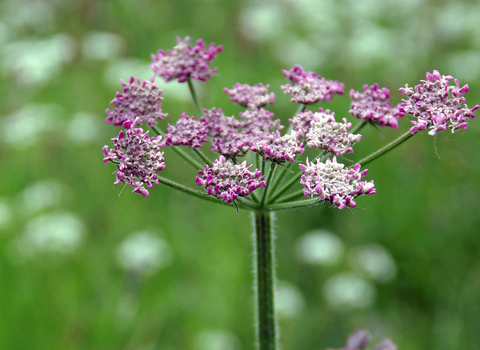©Philip Precey

©Gillian Day
Hogweed
Hogweed can be found along hedgerows and roadside verges, and on waste ground and rough grassland. It displays umbrella-like clusters of creamy-white flowers. It's native, unlike its relative, giant hogweed.
Scientific name
Heracleum sphondyliumWhen to see
May to AugustSpecies information
Category
Statistics
Height: up to 2mCommon.
About
Hogweed is a native plant (unlike its alien relative, giant hogweed) which is abundant in hedgerows, roadside verges, waste grounds and rough grasslands. As a member of the carrot family (an umbellifer), it displays large, umbrella-like clusters of creamy-white flowers between May and August (although it can flower all year-round) which are attractive to a range of insects.Although they might not look especially wildlife-friendly, our roadside verges, railway cuttings and waste grounds can provide valuable habitats for all kinds of plants and animals.
